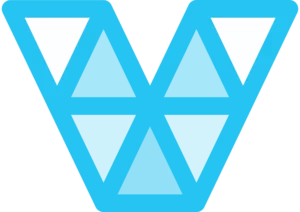The Software-as-a-Service (SaaS) model has revolutionized how businesses deliver applications, offering scalability, flexibility, and cost efficiency. For developers building SaaS platforms, open source frameworks provide a robust foundation for faster development and customization. In this blog, we explore the top open source SaaS frameworks of 2024 and the challenges they must overcome to stay competitive as we move toward 2025.
1. Laravel Vapor

Why It Shines
Laravel Vapor, built on the popular Laravel framework, is a server less deployment platform specifically tailored for SaaS development. It leverages AWS Lambda to deliver scalable and highly efficient applications. one of the Best open source SaaS frameworks of 2024.
Strengths
- Serverless Scalability: Allows developers to build applications without worrying about server management.
- Laravel Ecosystem: Benefits from Laravel’s extensive ecosystem, including Eloquent ORM, Blade templates, and community support.
- Cost Efficiency: Pay-as-you-go server less model reduces costs for startups and small-scale SaaS applications.
Challenges Ahead
- Vendor Lock-In: Heavy reliance on AWS services limits flexibility for multi-cloud strategies.
- Advanced Multi-Tenancy: Requires further optimization to support complex multi-tenant SaaS applications natively.
- Performance Monitoring: Enhanced real-time analytics and monitoring tools for server less setups are needed.
2. Ruby on Rails

Why It Shines
Although not PHP-based, Ruby on Rails remains a prominent open source framework for SaaS platforms, known for its simplicity and developer productivity. Features like convention-over-configuration and the Active Record ORM streamline development.
Strengths
- Rapid Prototyping: Ideal for startups looking to launch MVPs quickly.
- Rich Ecosystem: A wealth of gems (plugins) simplifies integrations and adds functionality.
- Scalability: While traditionally criticized, Rails has matured to handle large-scale SaaS products with the right configurations.
Challenges Ahead
- Performance Bottlenecks: Requires more robust tools to optimize for high-concurrency applications.
- Competition from Newer Frameworks: Frameworks like Laravel and Django are closing the gap in terms of developer experience.
3. Meteor

Why It Shines
Meteor is a full-stack JavaScript framework designed for building real-time web and mobile SaaS applications. Its simplicity and tight integration with MongoDB make it a favorite for teams aiming to build interactive, data-driven platforms.
Strengths
- Real-Time Capabilities: Built-in WebSocket support makes real-time functionality seamless.
- Unified Codebase: Allows developers to use JavaScript for both frontend and backend, reducing complexity.
- Rich Package Ecosystem: Comes with a strong package management system for extending functionality.
Challenges Ahead
- Scaling Real-Time Apps: Optimizing for larger applications with high user concurrency remains a challenge.
- Adoption Beyond Startups: While great for MVPs, Meteor must prove its worth in enterprise-grade SaaS projects.
- Integration with Modern Frontend Frameworks: Better support for frameworks like React and Vue.js is needed.
4. Next.js
![]()
Why It Shines
Next.js, powered by Vercel, is a React-based framework that supports server-side rendering (SSR) and static site generation (SSG). It’s a rising star for SaaS developers seeking performance and scalability.
Strengths
- Performance: Combines SSR, SSG, and client-side rendering for blazing-fast apps.
- SEO-Friendly: Built-in support for dynamic meta tags and server-side rendering enhances SEO.
- API Routes: Allows developers to add backend functionality without needing a separate server framework.
Challenges Ahead
- Backend Integration: While API routes are useful, scaling backend functionalities for complex SaaS apps can be cumbersome.
- Multi-Tenancy Support: Requires additional configuration or external tools to handle multi-tenant architectures effectively.
- Learning Curve for Beginners: Integrating advanced features like middleware and incremental static regeneration can be challenging.
5. Django

Why It Shines
Django, with its “batteries-included” philosophy, provides all the tools needed to build SaaS applications. While not PHP-based, it’s a top choice for Python developers looking to create scalable and secure SaaS platforms.
Strengths
- Security: Includes built-in tools to protect against common vulnerabilities like SQL injection and XSS.
- Rapid Development: The admin interface and ORM simplify CRUD operations and database management.
- Scalability: Works well with modern cloud setups to handle large-scale SaaS applications.
Challenges Ahead
- Complexity in Customization: While feature-rich, customizing Django for unique SaaS needs can be time-consuming.
- Ecosystem Competition: Competing with frameworks like Flask for microservices architecture requires continuous innovation.
Challenges and Opportunities Toward 2025
- Multi-Tenancy Support:
As SaaS applications grow, frameworks need to offer better out-of-the-box support for multi-tenancy, allowing developers to isolate customer data effectively. - Serverless and Edge Computing:
Integrating with serverless architectures and edge computing solutions will be critical to delivering low-latency, scalable SaaS products. - Real-Time Features:
With real-time collaboration tools becoming a staple of SaaS applications, frameworks must simplify WebSocket and event-driven programming. - Integration with AI and ML:
SaaS applications increasingly leverage AI for insights and automation. Frameworks need native support or plugins to facilitate AI/ML integrations. - Simplified Cloud Deployment:
Offering seamless integrations with cloud platforms like AWS, Azure, and Google Cloud, as well as containerization tools like Docker, will boost adoption. - Security and Compliance:
Frameworks must prioritize features for data security and compliance with global standards like GDPR, HIPAA, and SOC 2.
Final Thoughts
The open source SaaS frameworks of 2024—Laravel Vapor, Ruby on Rails, Meteor, Next.js, and Django—provide robust foundations for building scalable and feature-rich cloud-native applications. As businesses increasingly adopt SaaS models, these frameworks must innovate to address challenges like multi-tenancy, real-time capabilities, and AI integration. Whether you’re a startup launching your MVP or an enterprise scaling an existing platform, these frameworks offer the tools to bring your SaaS vision to life. Looking ahead to 2025, the focus will be on enhancing developer productivity, performance, and security in an increasingly competitive ecosystem.
Useful Links: Top 5 JavaScript Frameworks in 2024, Top 5 JavaScript Testing Frameworks in 2024, Top 5 CSS UI Kits in 2024, Top PHP Frameworks in 2024, Top 5 Open-Source PHP CMS Platforms in 2024,Top 5 Open Source Cybersecurity Tools in 2024,Best Open Source AI Frameworks in 2024, Top 5 Open Source E-Commerce Platforms in 2024, Top 5 Open-Source CRM Platforms in 2024,Best PHP Libraries for Web Developers in 2024,Open Source Blogging Platforms in 2024

